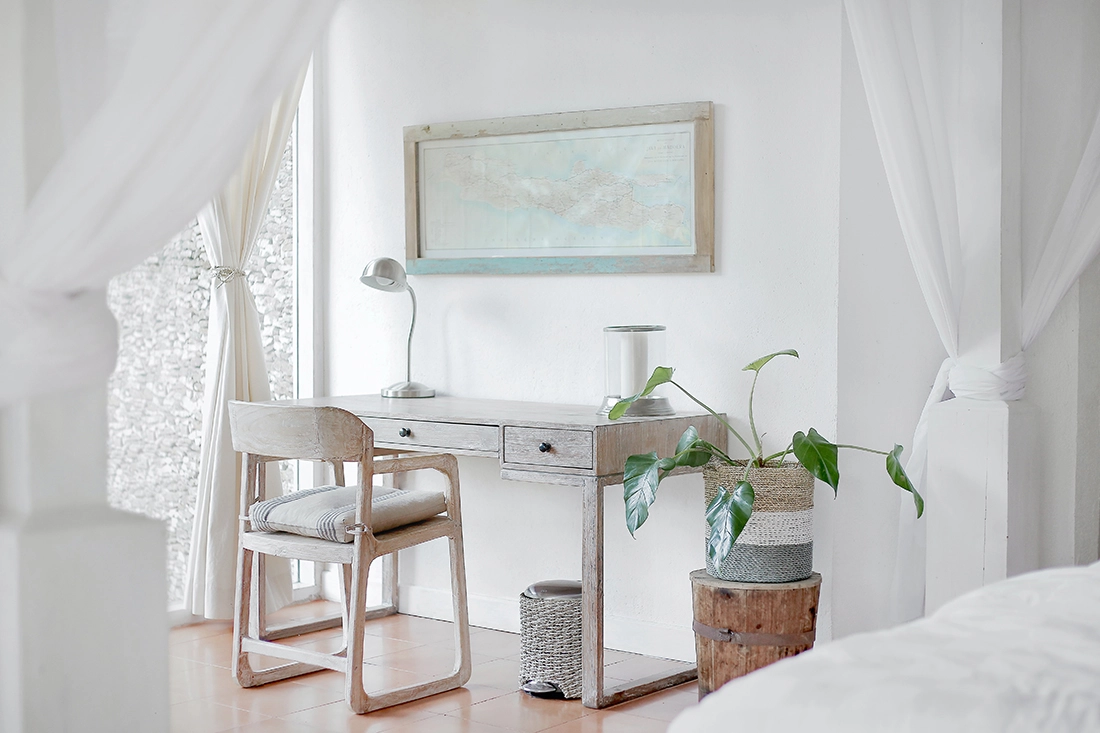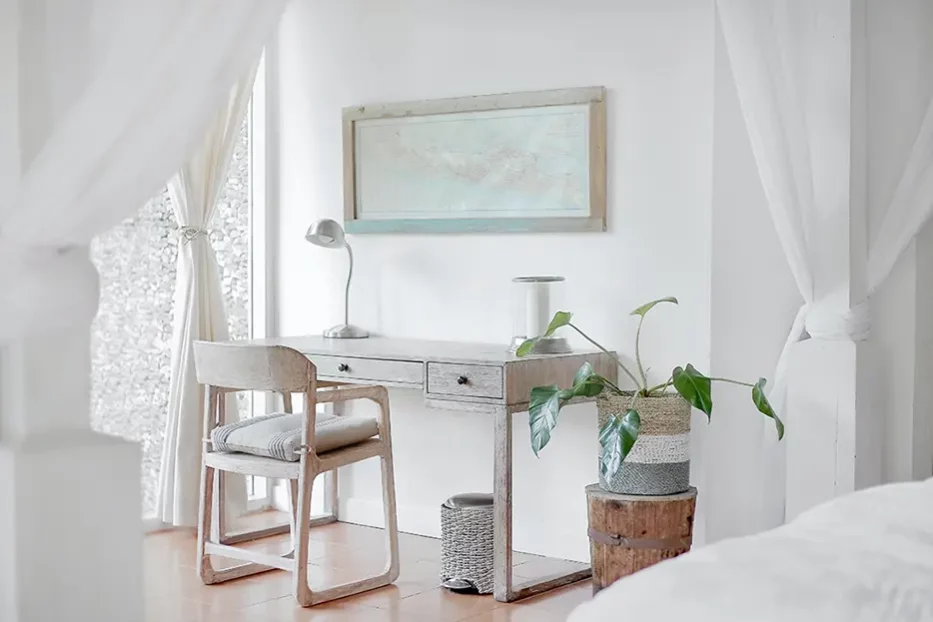
connected, remotely
Until recently, 9-5ers didn’t get much say in how their workspaces were arranged. Standard-issue desks, chairs, lighting and, if you were lucky, décor — may have been the status quo in the office space. Since the spread of COVID-19, companies have shifted to a more flexible, work-from-home model to ensure the safety of their staff.
While this flexibility benefits public health and encourages workers to quarantine safely in their own homes, it’s up to employees to determine the layout and functionality of their space. To some, it’s an exciting venture into the best use and design of their at-home office. Others may be indifferent, or feel that “makeshift” is the theme moving forward.
Although humans have the remarkable ability to adapt to any space, charging an at-home workspace with functional design and creative elements can boost productivity and make workers feel connected, remotely.
the purpose
Every square inch of a home can serve a purpose. An at-home workspace is no different.
To create the perfect work-from-home space, an employee should first determine the purpose — is it inspiration, maximum productivity or a mix of both? Achieving a balanced workspace is challenging, especially when space is limited. However, understanding the purpose of your workspace as it relates to your job can better define the form and function of the area.
inspiration. What inspires you? Do you need a tidy space with no distractions, or a colorful area peppered with art and books? Spaces that illuminate the mind can vary in design from person to person, so it’s essential to remember that what inspires others may not inspire you to create meaningful work.
productivity. Productivity works hand-in-hand with inspiration. While inspiration can impact the quality of work, productivity ensures that the work actually gets done. Generally, a productive space should be free of distractions (whatever those may be for you) and include the tools necessary for an effective workday.
striking the balance. Nearly every career demands some mix of inspiration and productivity to create the best work. Inspiring elements that clutter a workspace can lead to distraction, while a total lack of creative details can affect productivity.
Striking the balance between the two is a game of trial and error. An impeccable workspace is hardly ever devised on the first try, so play around with elements that are both productive and inspiring to find what works for you.
// the environment //
When the purpose of a work-from-home space is determined, the location, design and layout can be established. Regardless of the balance between inspiration and productivity necessary to your job, there are some essential elements to every workspace.
privacy. Working from home creates a new set of environmental challenges. Do you require privacy? Were you easily distracted in your office space (think chatty coworkers and last-minute meetings)? If so, these can shift into at-home interruptions such as the neighbor’s barking dogs or noise from the kids’ television shows.
Creating a workspace in a private area of your home is essential for minimizing distractions. A den, unused guest bedroom or even a corner of the master bedroom can forge the foundation of a private work area.
lighting. Ideally, a work-from-home area should be carved out in a space with ample natural light. Studies show that access to sunlight — and ultimately, vitamin D — can vastly improve an employee’s happiness and productivity.
If your home or work area isn’t drenched in natural light, opt for soft lighting from a standing or desk lamp to add more warmth to your workspace.
desk and chair. A dining room table is a decent makeshift solution for the at-home workspace, but distractions can and will happen in the long run. A range of desks and chairs are available from home furnishing stores, but what is most important is comfort. Eight-hour plus workdays are more enjoyable with the right desk and chair.
keep in mind
simplicity is key. Don’t overdo your at-home workspace with every element you see online. Start with a simple desk, chair and laptop and adjust your space based on its best use.
rearranging is necessary. Working from home is a new concept to some office workers, which can lead to rearranging your home to accommodate a new normal. Experiment with different workplace settings in your home to find what suits your need for inspiration and productivity.
flexibility is essential. Instead of being confined to a desk in a small office, at-home workers can be more flexible with what environment works best for them on a day-to-day basis. Take your work to an accessible outdoor space or walk around the neighborhood while taking a call with a client. Play around with new work styles to better adapt to a new work-from-home model.
SUBSCRIBE
to stay in the know
Your monthly dose of significant properties, seductive architecture, influential design, art that matters and community happenings.

